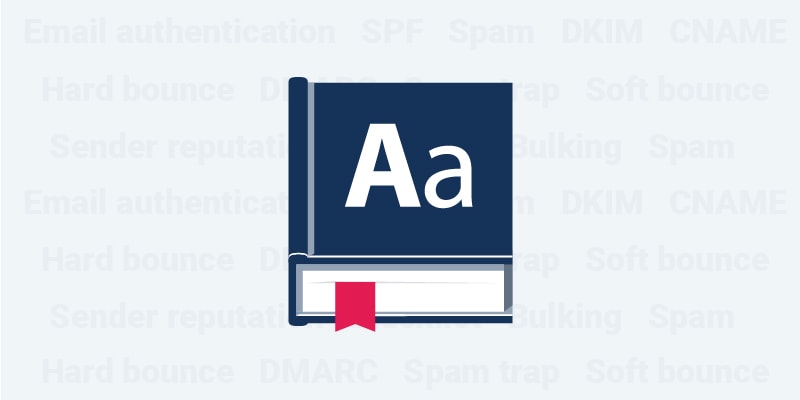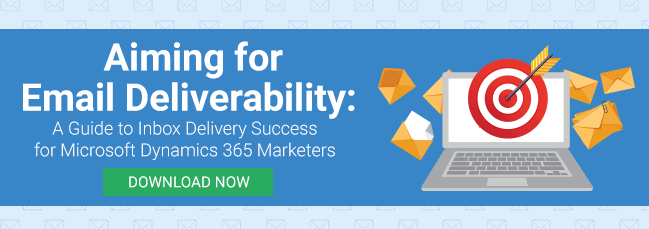
What is email deliverability? That’s an easy one, right? Yes and no. Email deliverability is fairly simply defined as the ability to get your emails into your subscribers’ inboxes. Beyond that simple definition, it gets a bit more complicated. That’s because there are a number of factors and criteria that determine deliverability as well as best practices to follow that all come with definitions of their own.
In addition, email deliverability is complicated by the fact that “deliverability” and “delivery” are often used interchangeably, when they are quite different. Delivered email is mail that is capable of being received by a recipient, which means that the email did not bounce. While a low bounce rate is good, delivered mail doesn’t indicate complete success because the email could be in a spam folder or may be quarantined elsewhere. That’s why marketers should aim for deliverability because it is an indication that an email landed in a subscriber’s inbox.
So now that we have examined the basic definition of deliverability, let’s take a look at some related deliverability terms that every marketer should know.
1. Email authentication. Email authentication refers to the technical processes and standards that make the verification of an email’s origin possible. It is of critical importance because email authentication proves that an email is not forged and is most often used to thwart fraudulent emails like spam and phishing scams.
There are three standard email authentication methods in use today:
- SPF (Sender Policy Framework): SPF records allow domain owners to specify which computers are allowed to send email using a company’s domain name. When an email is received, mailbox providers compare the sending computer’s IP address with the IPs included in the domain’s SPF records to verify the sender’s identity. If the sender does not have permission to use the domain, the recipient’s mail server may reject the message or mark it as spam.
- DKIM (Domain Keys Identified Mail): DKIM records ensure that the email and email content are unaltered during transit by encrypting and hashing pieces of the email (header and content) by the outgoing server then unencrypting and comparing the original data to the received data.
- DMARC (Domain-Based Message Authentication, Reporting and Conformance): Publishing a DMARC policy allows domain owners to instruct an email’s receiving server regarding how messages that fail SPF or DKIM verification checks should be handled. These failures result in a report being made to the sender, delivery to the recipient’s spam or junk folder, or the message bouncing or being rejected.
2. Spam. Spam is any unsolicited message sent in bulk via email. This designation exists regardless of whether recipients are customers of the sender, thus promoting permission-based email marketing.
3. Spam trap. “Spam trap” email addresses are valid email addresses that are created for the sole purpose of identifying marketers with poor sending practices.
4. Spam complaint. A spam complaint is the result of a human registering a complaint that the email they received is unwanted. Spam complaints can arise through a variety of sources and for a variety of reasons, but practicing permission-based marketing can significantly reduce your chances of receiving one.
5. Spam score. The SpamAssassin spam score is a widely used measurement to predict how your email may be received by various mailbox providers and ISPs. A spam score ranges from zero to 10. You should aim for a spam score of three or less.
6. Blacklist. To prevent spam from clogging people’s inboxes, email service providers use a variety of tools to determine if an email is legitimate and desired by the intended recipient. One such tool is an RBL, or remote blacklist. An RBL is a list of known or suspected IP addresses that are considered to be sources of spam. There are hundreds, if not thousands, of RBLs in the world. Some of them are maintained by large companies, some are open source projects run by volunteers and some are run by a single (very devoted) person. A blacklist’s legitimacy and impact can vary as much as the size.
7. Bulking. Bulking is the technical term for when emails are delivered to a junk/spam folder.
8. CNAME. A CNAME will rebrand the redirect links in your email to coordinate with your sending domain. When the sending domain and the link domains match, it makes the email look professional and polished. Not having a CNAME set up will not affect deliverability for an email. However, a broken CNAME record can create 404 errors and result in your email being flagged as spam.
9. Hard bounce. Hard bounces indicate an invalid email address. The email address most likely has been abandoned or was submitted incorrectly. These email addresses will be excluded from future sends automatically by your email service provider.
10. Soft bounce. Soft bounces provide more information and indicate an issue that can be resolved, whether it is incorrect syntax in an email address or SPF issues with the sending domain.
11. Sender reputation. This term refers to the measurement of your email sending practices and how trustworthy your IPs and domains are deemed by ISPs and spam filters. Much like a credit score, there are many factors that are considered in a sender reputation and it takes time to build. You can look up the Sender Score of an IP or domain at Senderscore.org. Sender Score is a proprietary algorithm created by Return Path and it, in general, translates to the sender reputation. The higher your Sender Score, the more likely your emails will be delivered to the inbox.
Happy Marketing!







